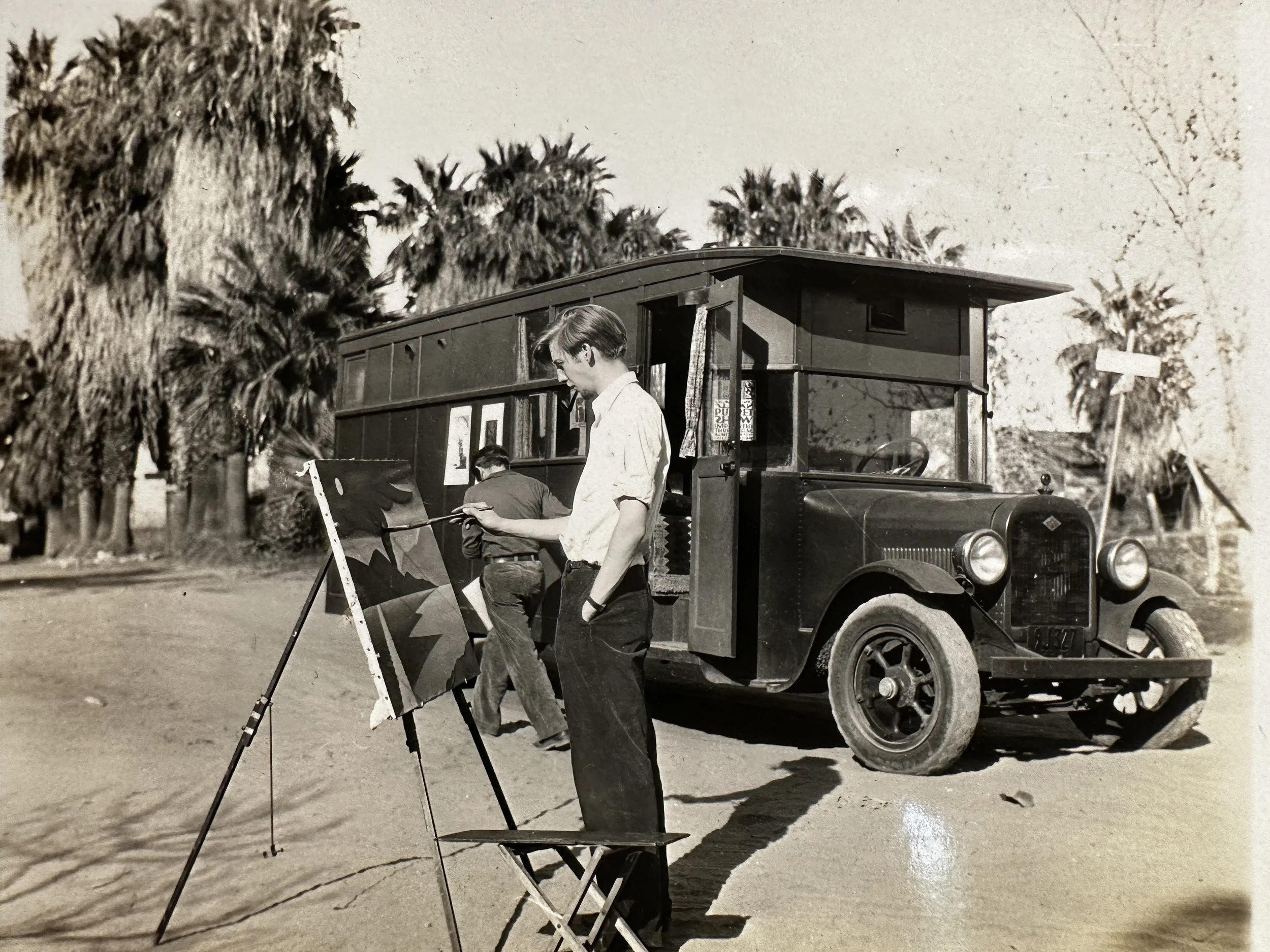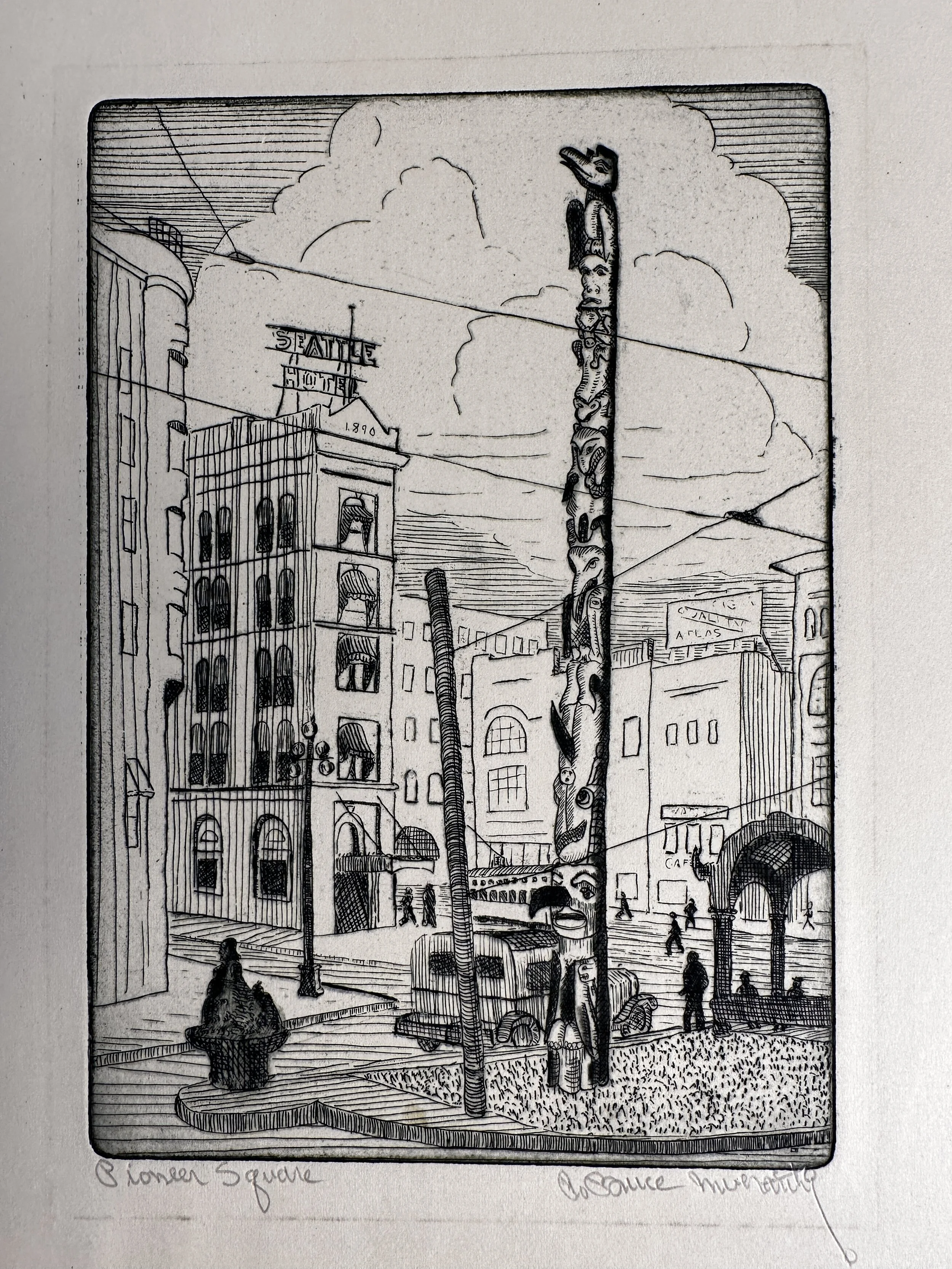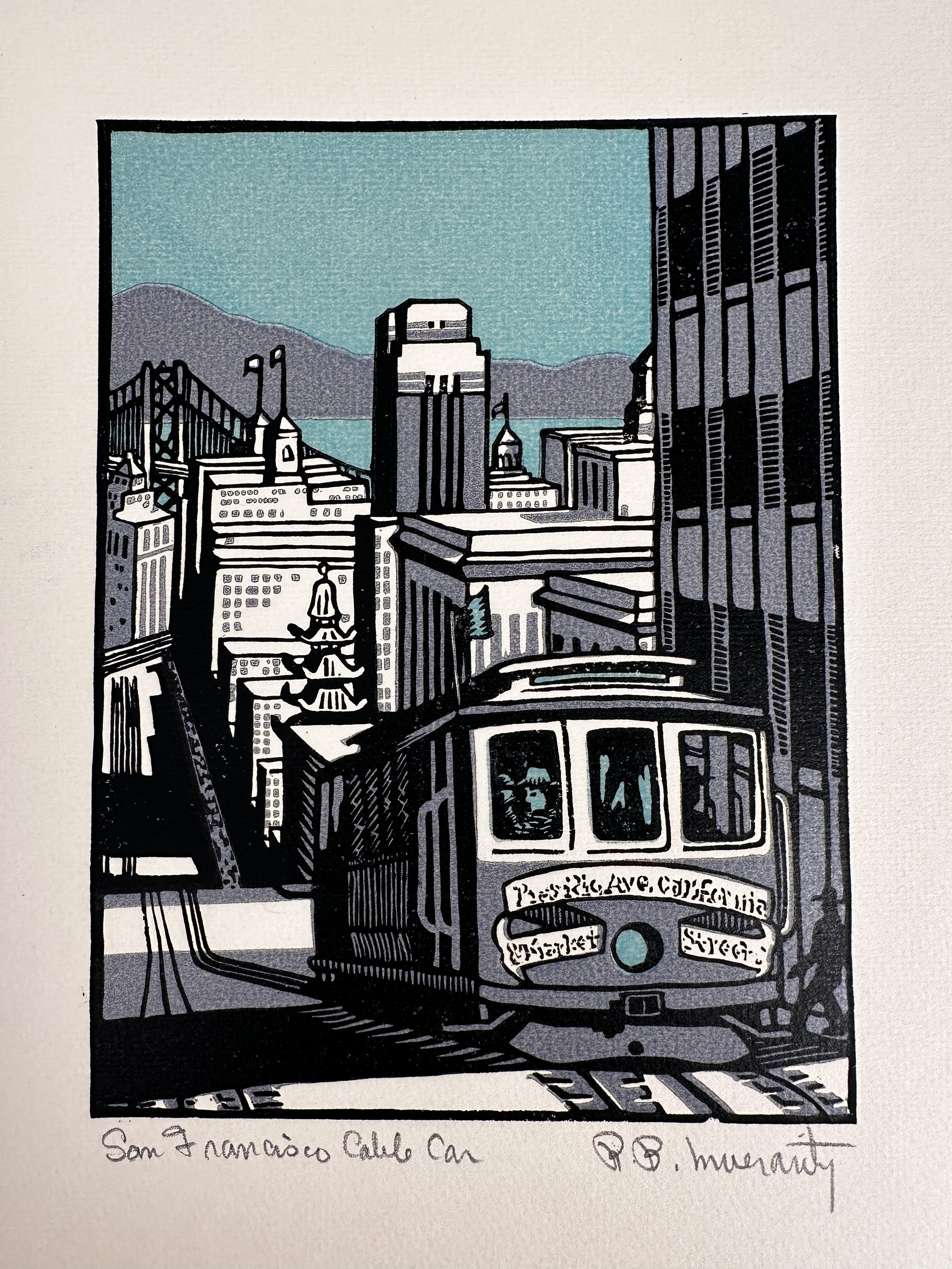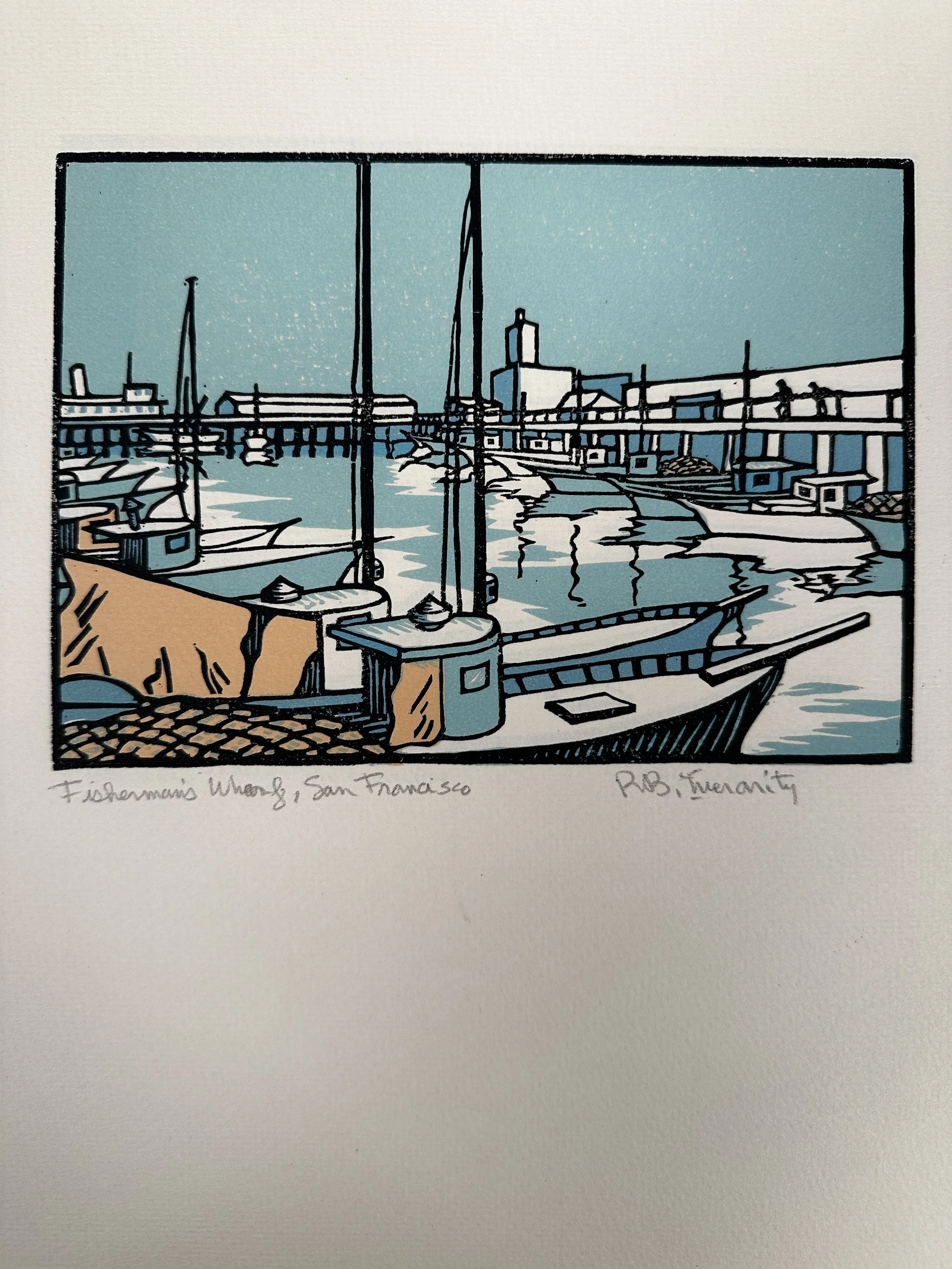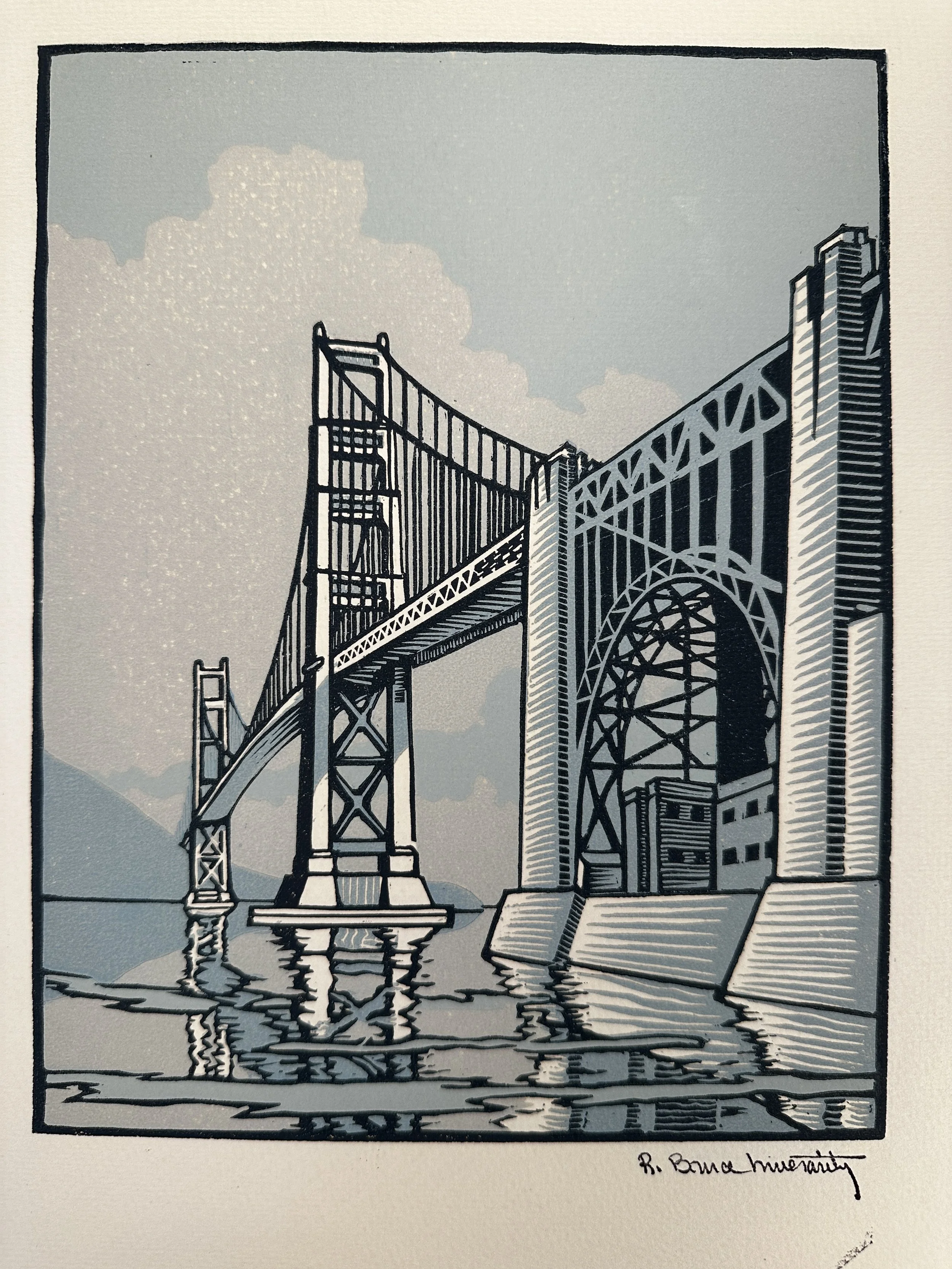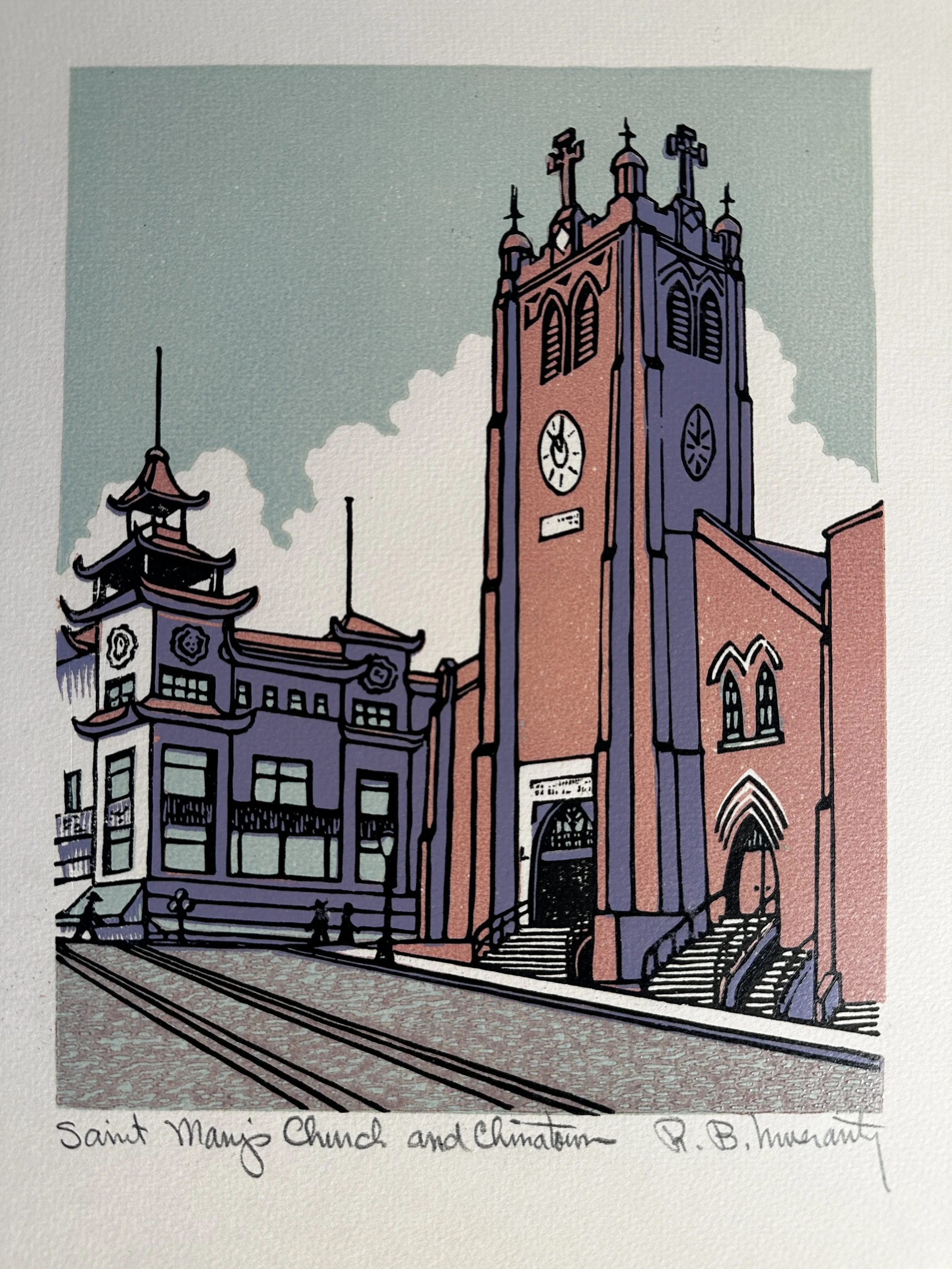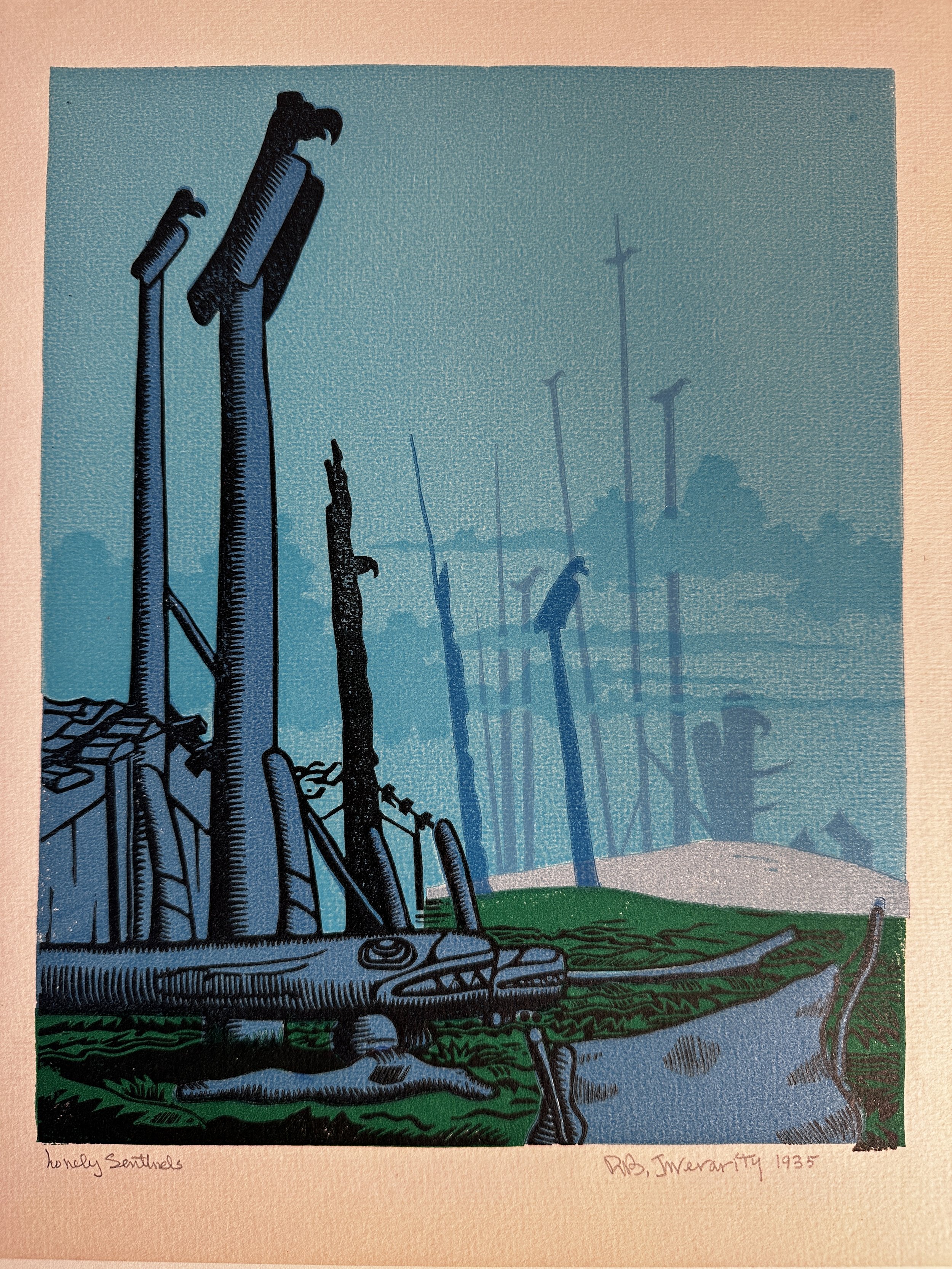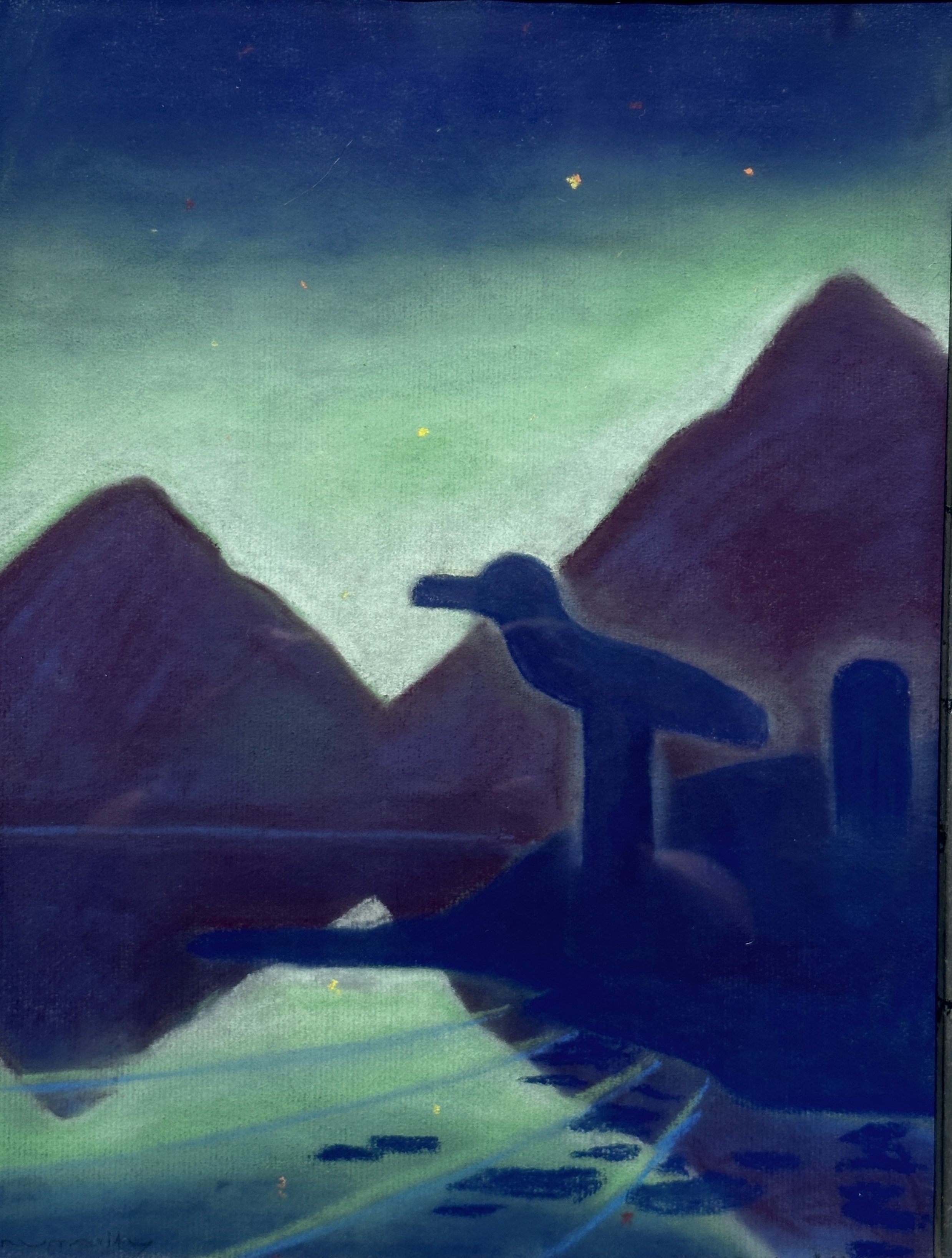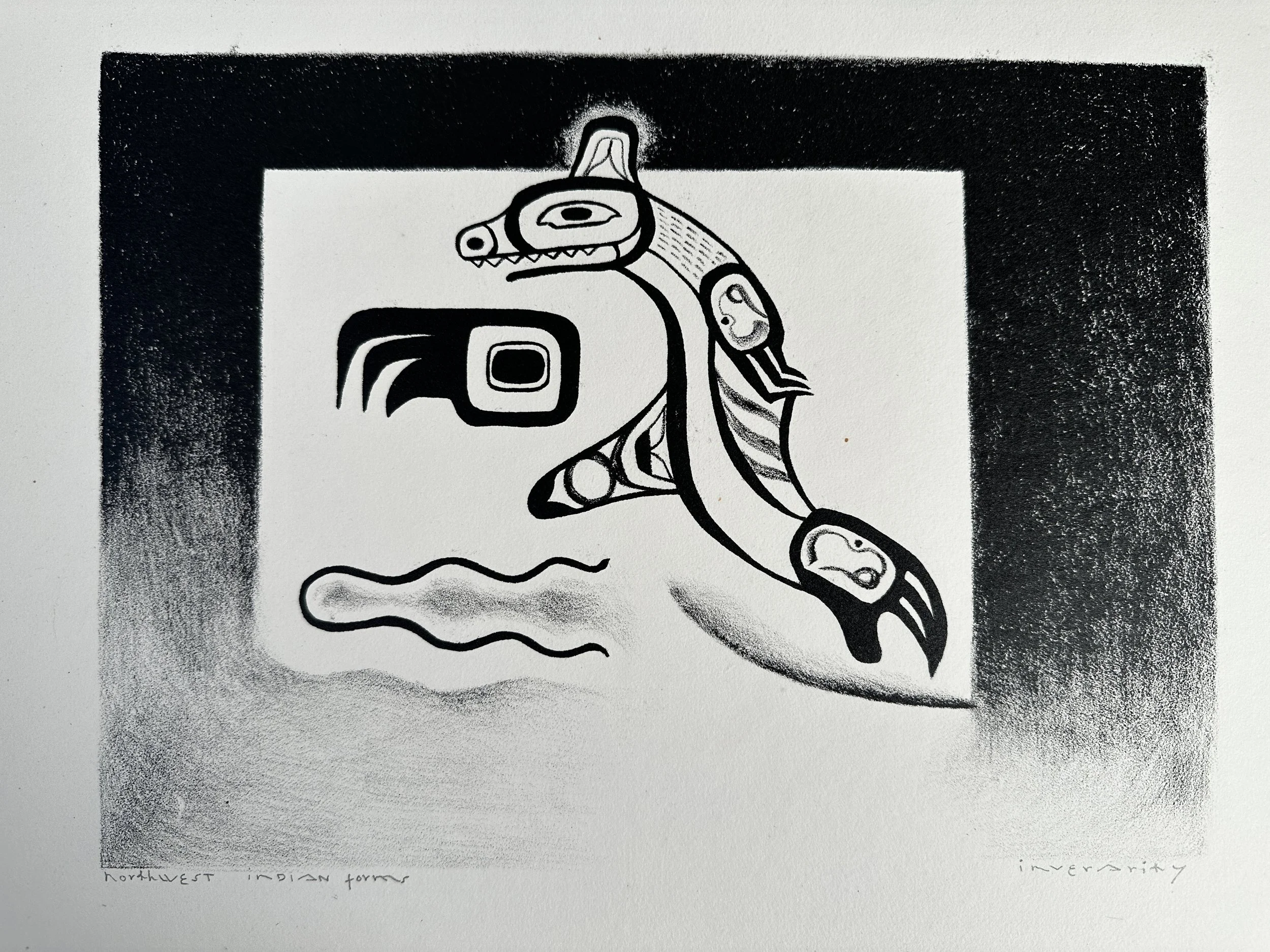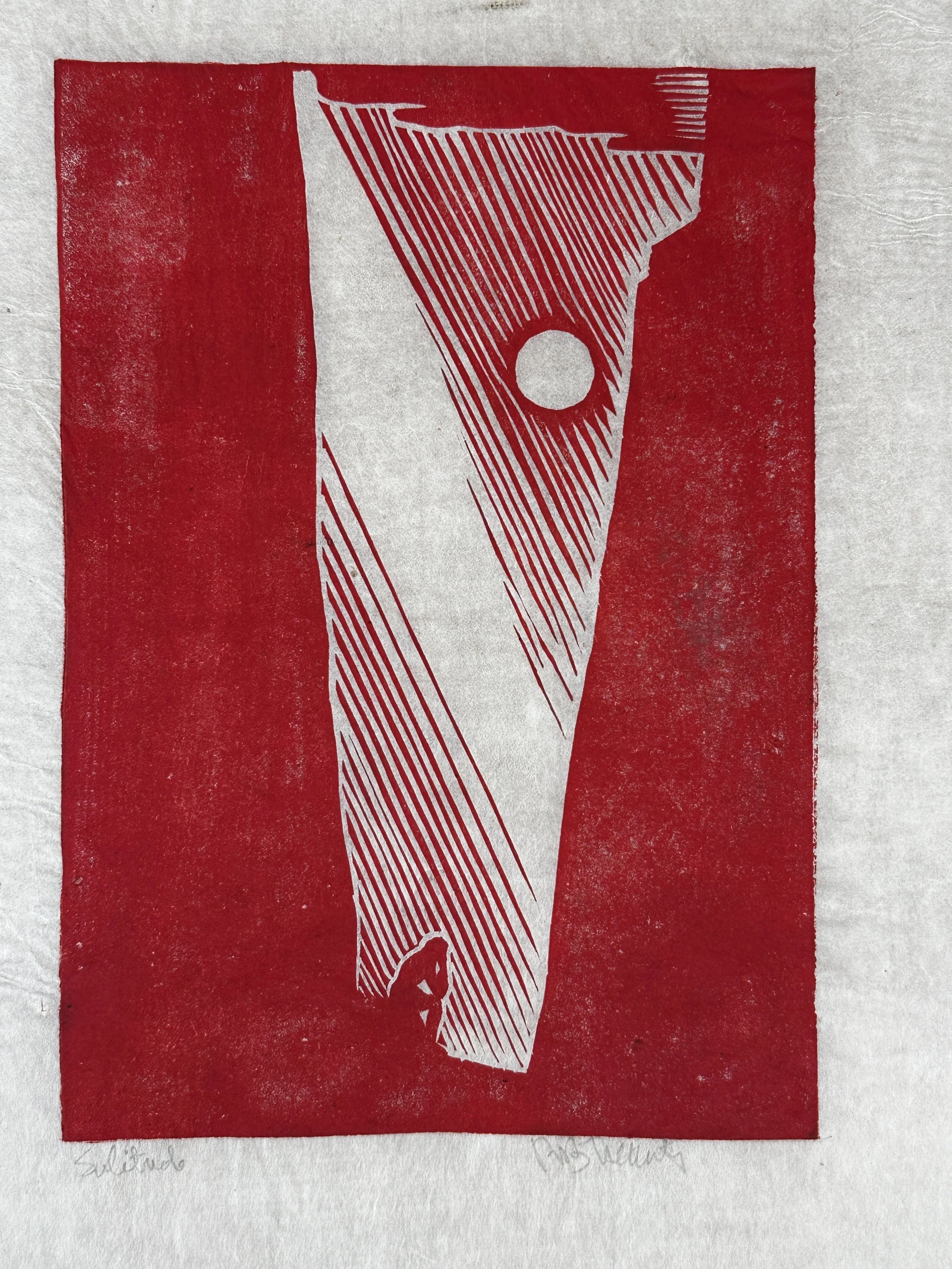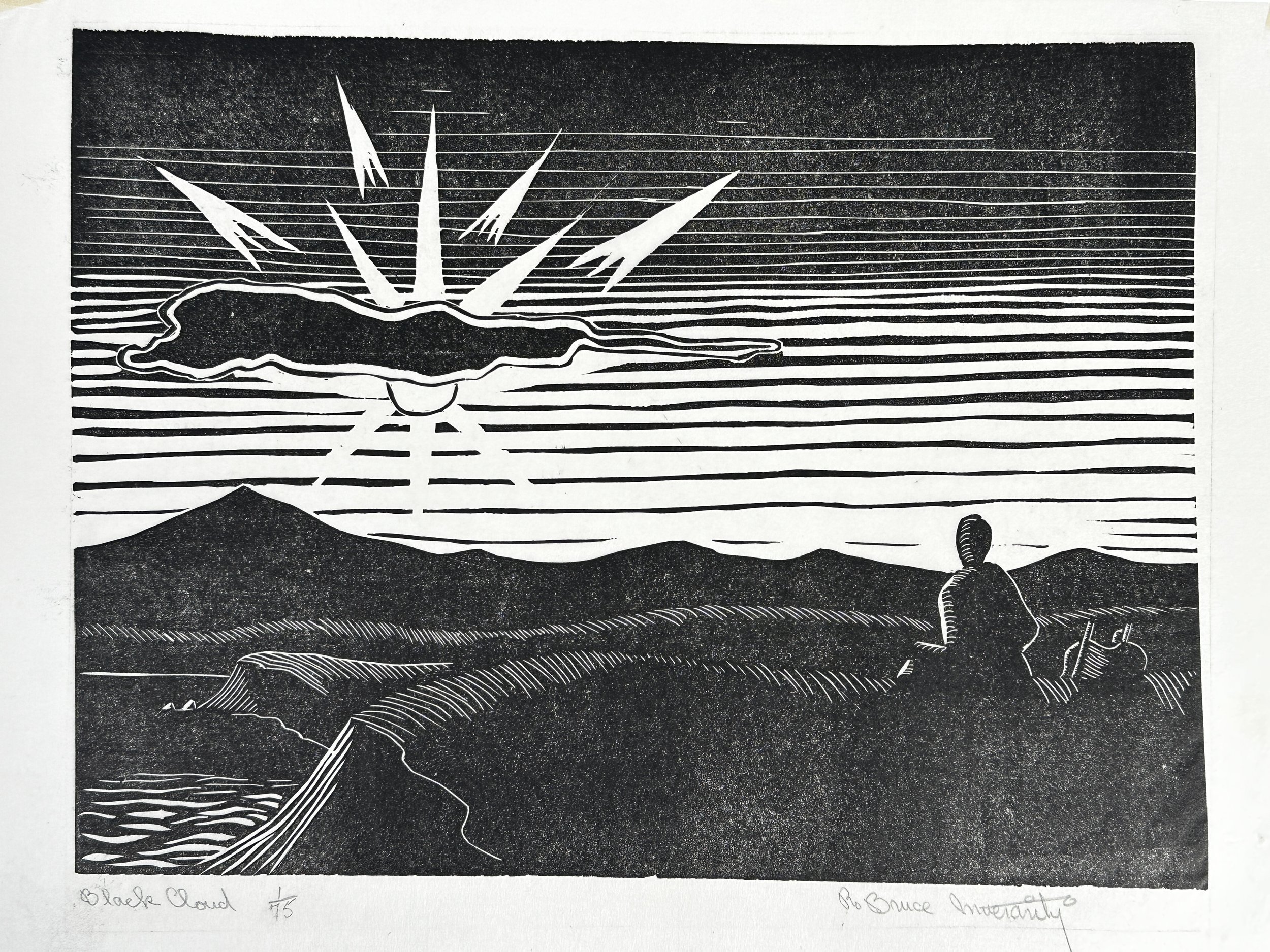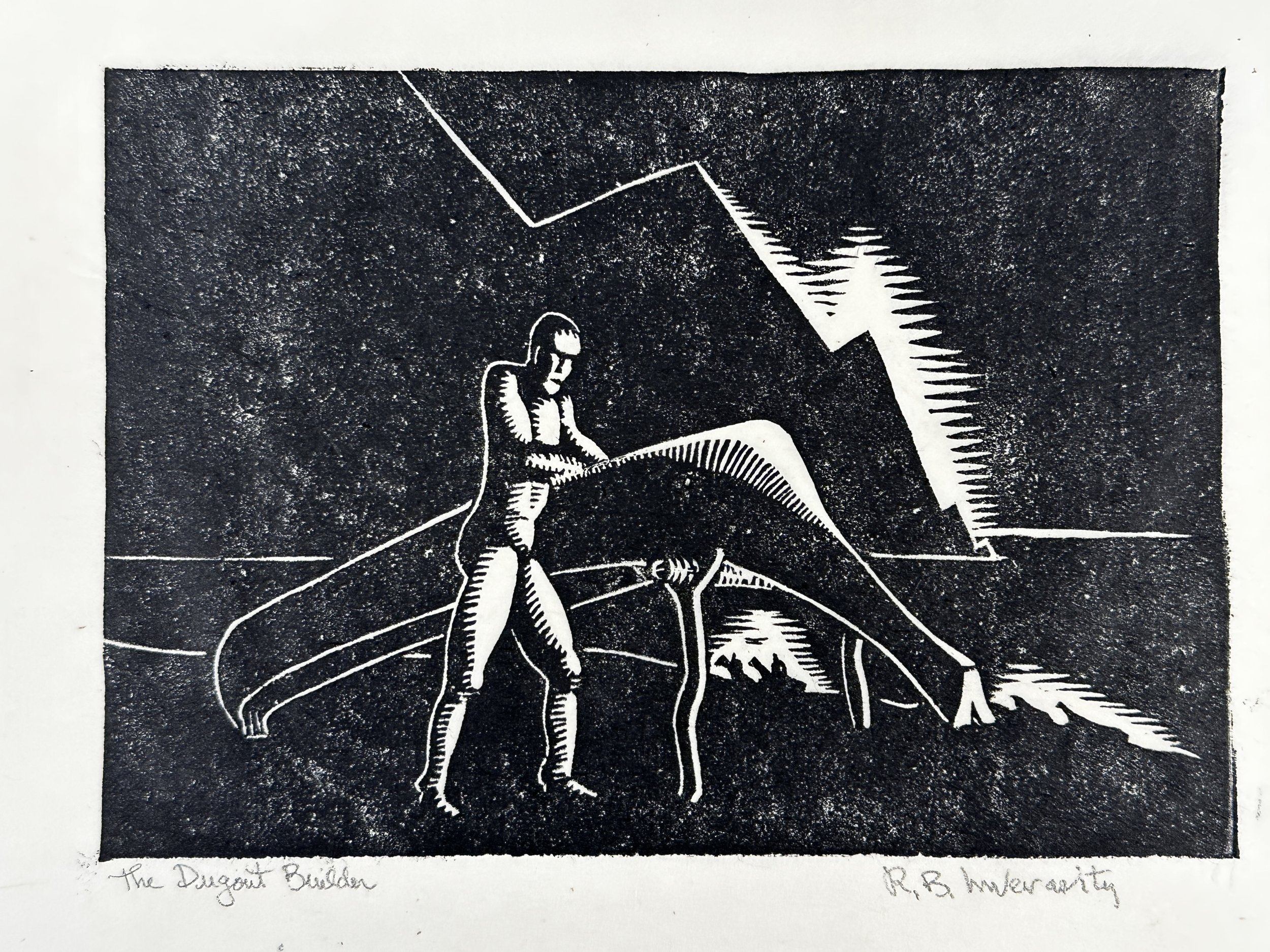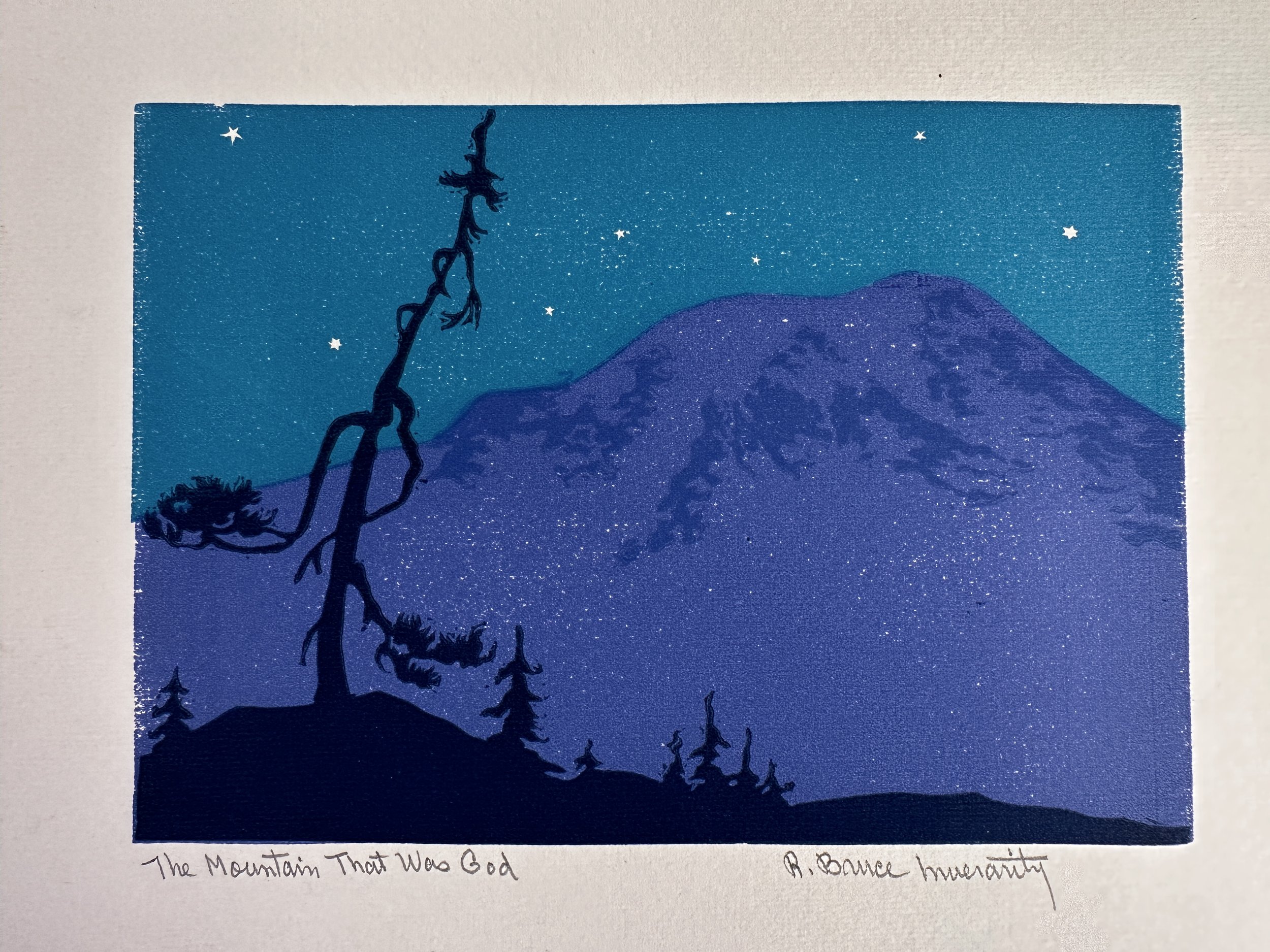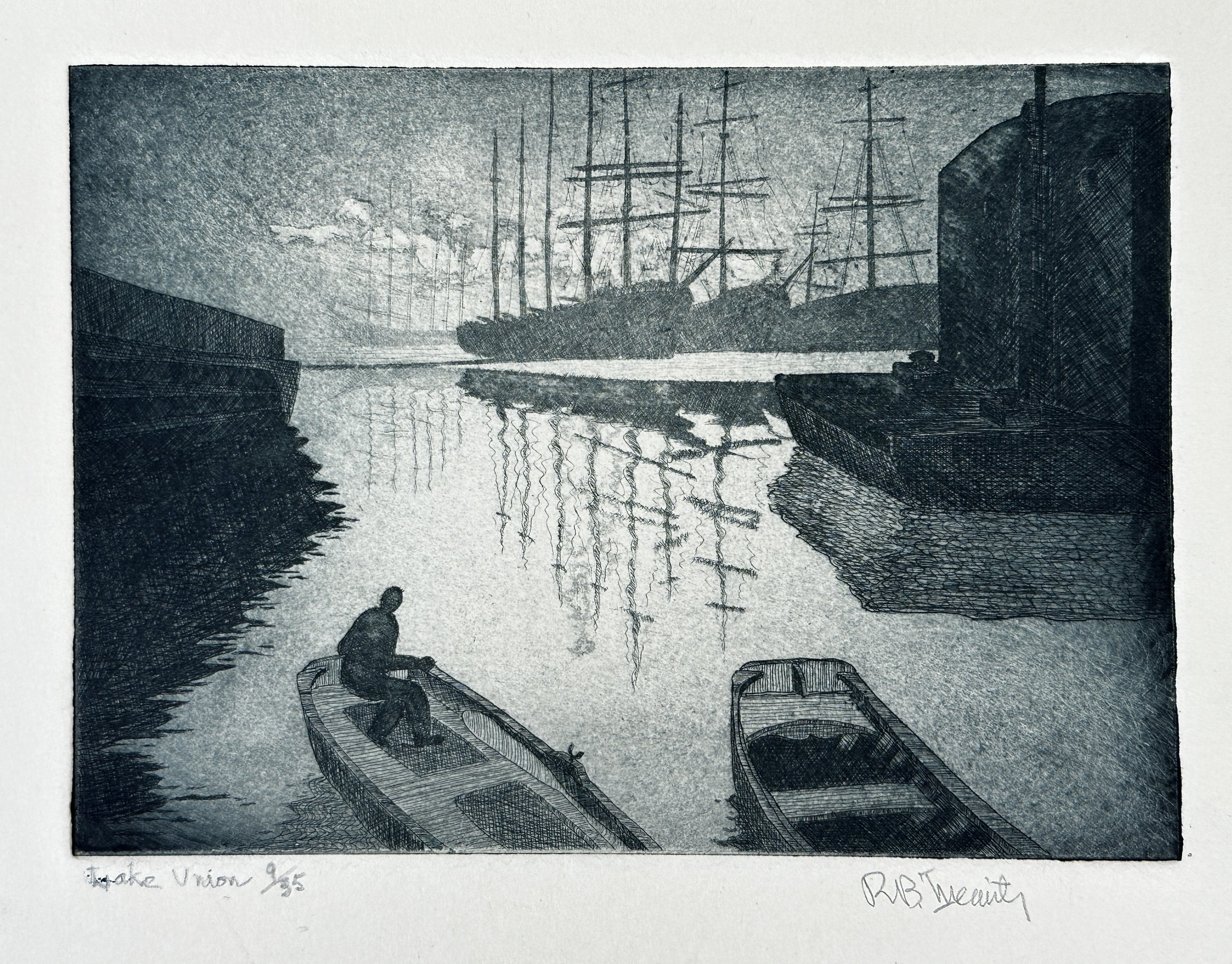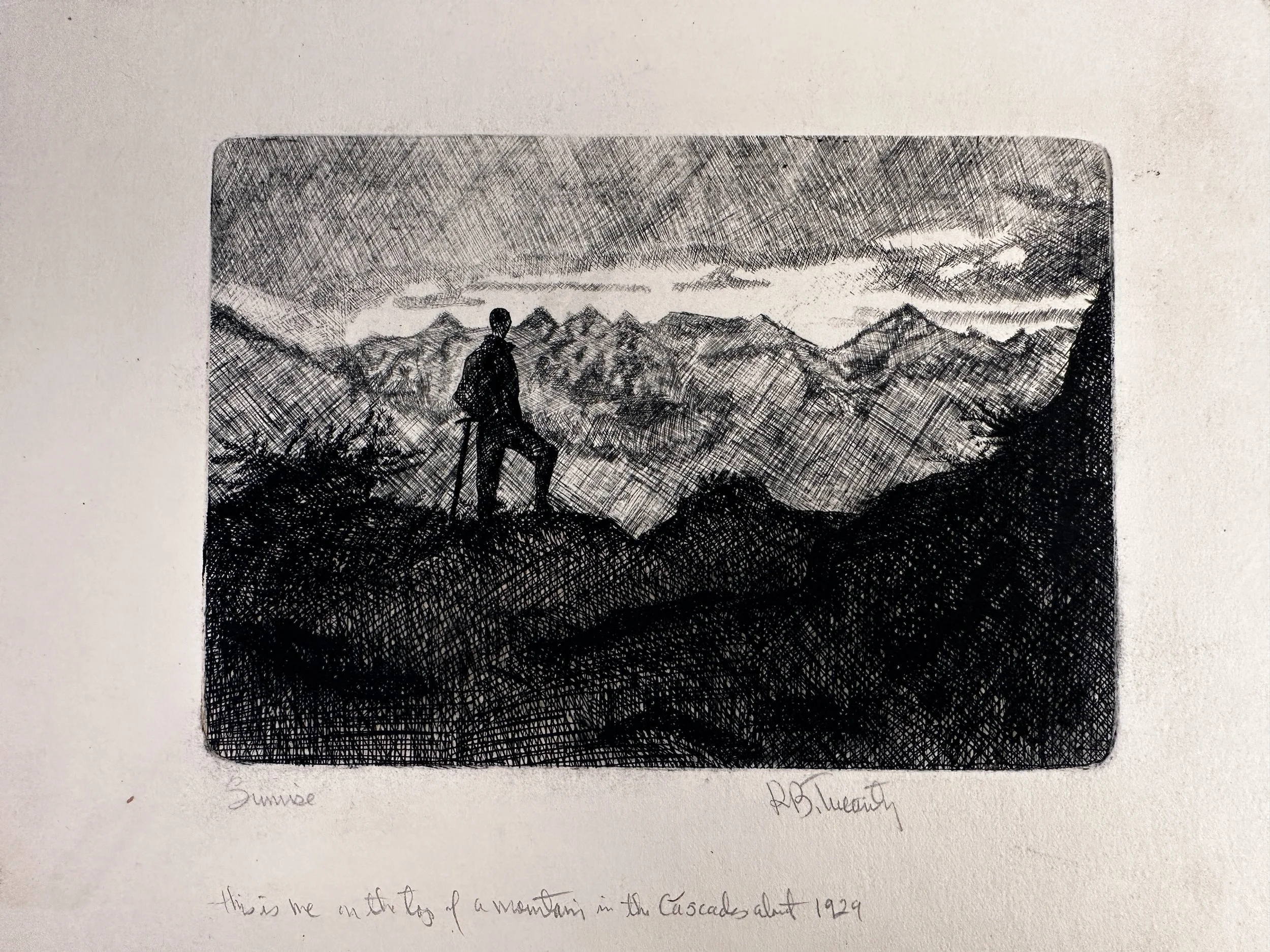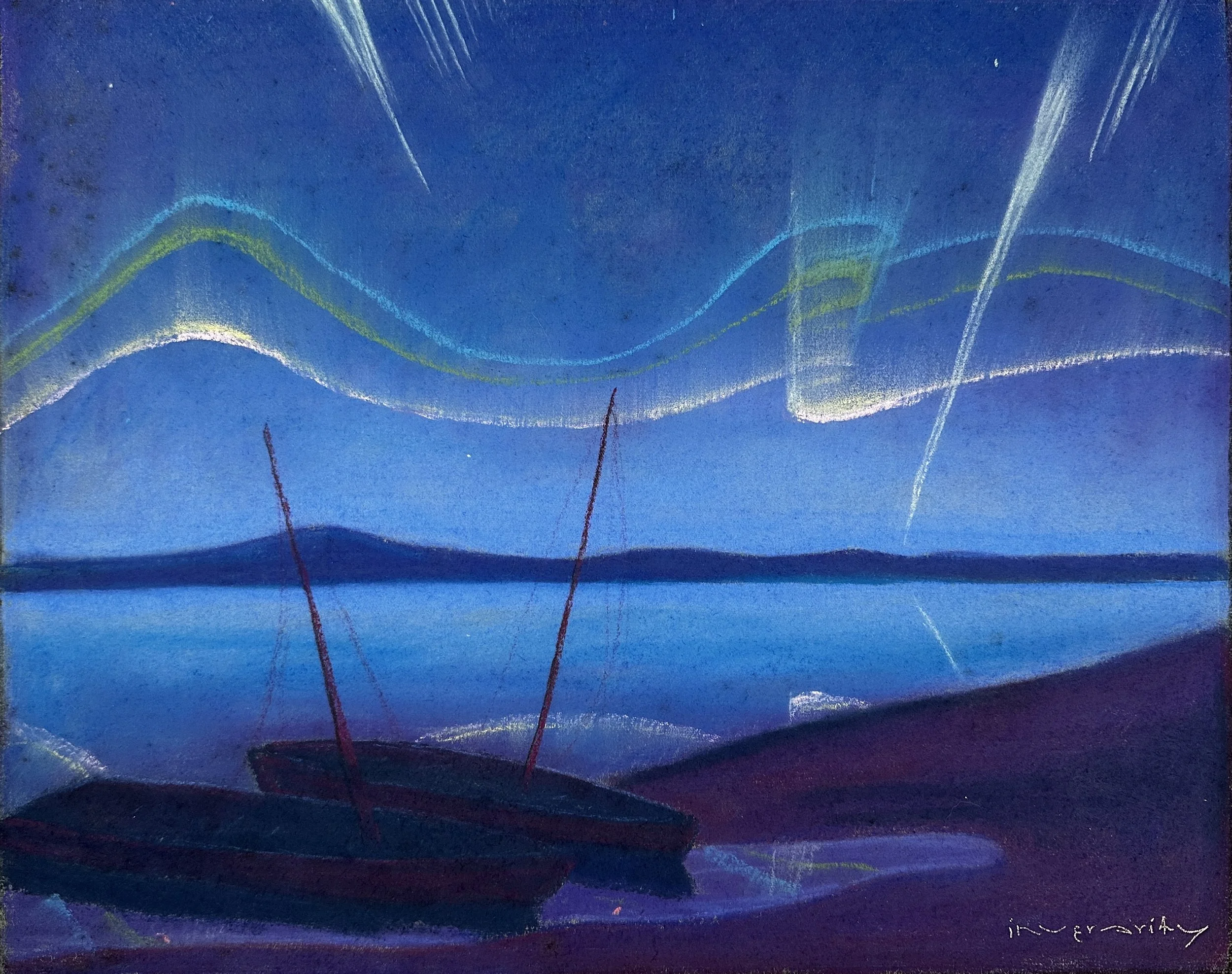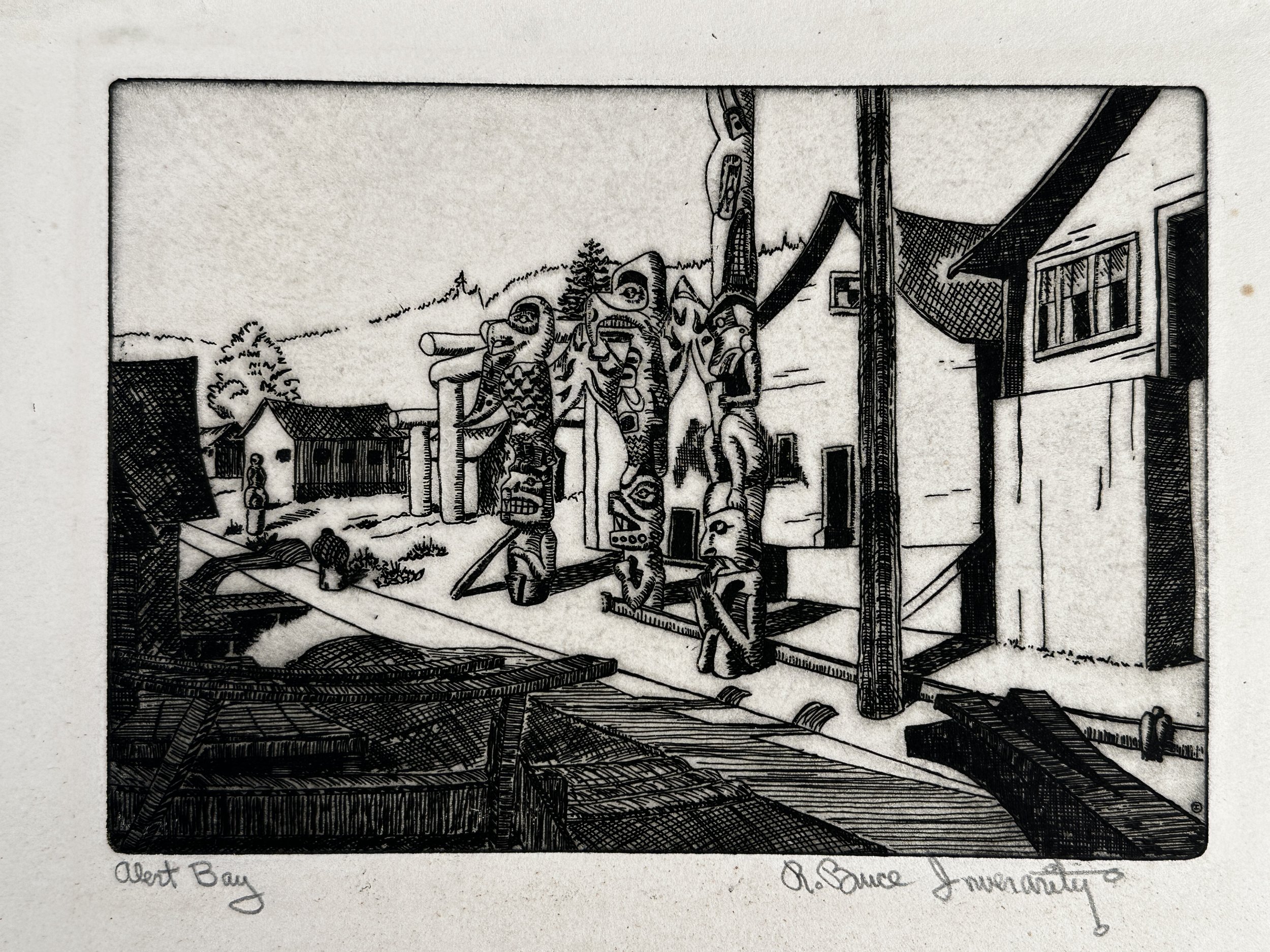Robert Bruce Inverarity
Robert Bruce Inverarity (1909-1999) was born in Seattle Washington July 7, 1909. His father, Duncan George Inverarity was active in vaudeville, puppetry and photography, having assisted Edward Curtis on an Alaskan expedition in 1899. His father was very interested in the Native Northwest culture and art, this becoming a major influence on Bruce at an early age. The family moved to Canada but returned to Seattle where upon his High School graduation he went on a 500 mile hike of the Canadian coastline to study the native tribes and landscapes. Upon his return in 1928, he took studies and shared a studio with Mark Tobey who was teaching at Cornish College, eventually taking over his classes when Tobey left for Europe. At this same time, the Japanese woodblock master, Yamagishi Kazue arrived in Seattle to teach courses in block printing. Bruce was in attendance along with fellow Northwest artists including Waldo Chase and his brother, W. Corwin Chase.
He exhibited as part of the Annual Exhibition of Northwest Artists in 1927 & 1928 along with his first one man show at the Seattle Fine Arts Society before leaving for San Francisco in 1929 where we taught art at the Y.W.C.A. and worked on block prints depicting the city. While in California, Bruce exhibited at Curtis Galleries, the Blanding Sloan Workshop Gallery, the Edward Weston Gallery in Carmel, “Studio on Wheels” in Santa Barbara & Ventura and the El Paseo Gallery in Palm Springs. In addition, he travelled extensively exhibiting work back in Seattle at Lowman & Handford (Pioneer Square) and the Henry Gallery (UW) as well as in Brooklyn, Chicago and Vancouver.
In 1931, Bruce moved to Vancouver, British Columbia to act as the Director at the School of Creative Art. During this period in 1932, Bruce scheduled a journey to the Queen Channel Islands with plans to record his first anthropological observations on the local tribes and document his three month trip with sketches, maps and artwork. Much of the central artwork from his oeuvre can be traced back to this expedition and was on view at his one man Vancouver Art Gallery show in December of 1932 (Review & Checklist). His plans included publishing a book on the Haida Tribe from the islands, although unpublished, his journal, photo album and sketches have survived. Bruce detailed in his notes that “the block prints, etchings and line drawings were completed after the trip to the Queen Charlotte Islands…the pastels were done ‘on the spot’.”
Bruce returned to Seattle in 1933, taking up a puppetry position with the University of Washington drama division. He continued to work on art and exhibited at the National Gallery of Art in Canada, the Chicago World’s Fair, Gump Gallery (SF) and the Seattle Art Museum. One of his Northwest modern abstracts was selected to be on view at the New York World’s Fair in 1939. He left his position at the University to become the State Director of the Federal Arts Project for Washington State (1937-39) and the Washington State Art and Craft Project for the WPA (1939-41). During the war, Bruce designed camouflage for the Navy, becoming their official war artist in 1943. When the war ended, he worked as an art director for Boeing in Seattle for several years. He continued to work through 1976 as the director for several important museums including the International Folk Museum in Santa Fe (1953), the Adirondack Museum in Blue Mountain Lake, New York (1955) and the Philadelphia Maritime Museum (1976).
Bruce was as much a Northwest Coast anthropologist as an artist as illustrated by his vast publishing output starting in the 1940’s. He published books, pamphlets and papers including: The Art of the Northwest Coast Indians (1950), Moveable Masks and Figures of the North Pacific Coast Indians (1941), Northwest Coast Indian Art (1946), and Masks and Marionettes of the Northwest Coast Indians (1940). On top of this work, Bruce was quite a noted portrait photography, taking images of some of the best known artists of the 20th Century such as Marcel Duchamp, Max Ernst, Morris Graves, Mark Tobey, Stanton McDonald Wright, Rockwell Kent and Man Ray.
During his years of study among Indian tribes, Bruce collected an unrivaled collection of cultural Indian artifacts. Inverarity's desire was to keep this collection intact and sold the collection to the British Museum in 1976. Considered one of the finest of it’s time, the collection is still on display in England.
Robert Bruce Inverarity: Complete Biography with Exhibition List
Complete Showcase of Printed & Painted Media
Haida / Queen Charlotte Islands: Journals, Photo Album, Sketch Book
